Key points:
- One key goal of Starship's seventh test flight on January 16th was to test the innovative "Pez Dispenser" satellite deployment system, which will be used to launch the upcoming Starlink V3 satellites.
- The Starlink V3 satellites will mark a tremendous jump in the Starlink constellation's capabilities. Each Starship launch with V3 satellites aboard will deploy 20x the constellation bandwidth as a Falcon 9 launch with Starlink V2 Mini satellites.
- Unfortunately - despite the picture-perfect Super Heavy booster launch and landing, the Starship spectacularly exploded before the test could be completed.
- With SpaceX's rapid testing pace, this failure might only result in a few months' delay before the first next-generation Starlink satellites launch.
- UPDATE: SpaceX tried again on March 6th, and the eighth Starship flight failed again before any new testing could be completed. This is likely a major setback for SpaceX and Starlink. For more - see the new section at the end of this article.
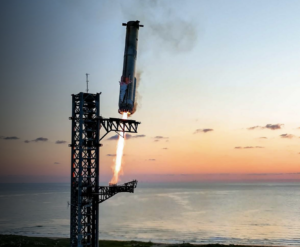
SpaceX's Starship is the largest rocket ever built, and when the system is fully operational and rapidly reusable it will be capable of delivering more cargo into orbit vastly more affordably than anything before. It absolutely dwarfs SpaceX's workhorse Falcon 9 rocket and even towers over historic giants like the Saturn 5 that took humans to the moon.
From the beginning, SpaceX's Starlink satellite constellation was designed with its massive Starship launch system in mind.
As we covered back in November 2021 - at one point, Elon Musk warned SpaceX employees that the company faced a genuine risk of bankruptcy unless Starlink was launching on Starship twice a month by the end of 2022:
"The consequences for SpaceX if we can not get enough reliable Raptors made is that we then can’t fly Starship, which means we then can’t fly Starlink Satellite V2 (Falcon has neither the volume nor the mass to orbit needed for satellite V2). Satellite V1, by itself, is financially weak, while V2 is strong."
What it comes down to, is that we face a genuine risk of bankruptcy if we can’t achieve a Starship flight rate of at least once every two weeks next year."
That goal of launching Starlink V2 satellites on Starship in 2022 was obviously massively missed.
However, as Starship slipped schedule, SpaceX pivoted and developed a smaller, less capable version of the Starlink V2 satellite design that could fit on the Falcon 9. The "V2 Mini" has become the foundation that has allowed the Starlink constellation to thrive.
But instead of up to 60 Starlink V1 satellites per launch - only 27 V2 mini’s could be launched on a Falcon 9 at once. This has slowed down the pace of the Starlink constellation's growth. And when V2 Mini satellites began to feature a piggyback Direct-2-Cell payload, only 20-23 could be carried aloft simultaneously.
The Falcon 9 was just maxed out.
But it looks like 2025 may be the year that Starship is ready for commercial service and the true next generation of Starlink satellites begin to launch - and the upgrade appears to be massive.
Now known as Starlink V3, these new sized-for-Starship satellites are massively larger and more capable than anything that could ever be launched on the Falcon 9.
This week's Starship seventh flight test was supposed to mark the beginning of the Starlink V3 testing campaign - but Starship exploded before any Starlink V3 testing was possible.
Is this a major setback for Starlink?
Or just a minor bump in the road?
We were there for the launch - and have the details on Starlink V3 to share...
Table of Contents
Starlink Video Update
Filmed at the launch site in Texas, before (and after) the January 16th launch of Starship flight test seven.
Starship’s “Pez Dispenser” Deployment System
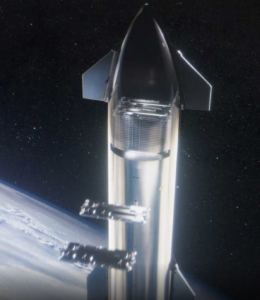
One key goal of Starship's seventh test flight was to be the first test of the innovative "Pez Dispenser" satellite deployment mechanism, which would allow Starship to deploy a stack of up to 54 Starlink V3 satellites, one at a time, out of a side hatch.
Since this was slated to be an intentionally sub-orbital test flight, it wouldn't make sense to deploy a real Starlink V3 satellite since the rocket and any deployed payloads would return to Earth in the Indian Ocean.
This test flight was the first to carry this deployment system and ten dummy payloads the size and weight of an operational Starlink V3 satellite.
The dummy satellites would test the deployment system and then burn up - and the Starship itself would have ideally made a pin-point soft landing on the ocean, carefully observed by remote cameras.
Unfortunately, Starship had a major failure well before then and disintegrated spectacularly over the Caribbean long before any satellite deployment testing could be completed.
SpaceX will likely want to repeat this sub-orbital test before moving forward with an actual Starlink V3 orbital deployment.
Starlink V3 - A Massive Upgrade!
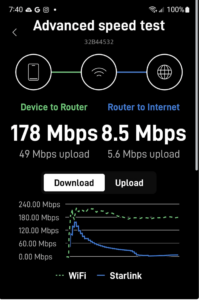
SpaceX's 2024 annual Starlink progress report revealed the first details of Starlink V3 satellite capabilities.
The capability increase is huge, thanks to the physically larger (approximately 1900 kg vs. 575 kg) satellites, which have more solar and computing power available.
Here are the details - comparing each launch of Starship and Starlink V3 to the existing Falcon 9 and Starlink V2 Mini:
- Payload Mass: Starship can carry a 100-ton Starlink payload to orbit per launch versus 17 tons for Falcon 9.
- Satellites Per Launch: Starship should be capable of carrying 54 V3 satellites, more than twice the 20-23 V2 Mini satellites that recent Falcon 9 launches have been carrying.
- Bandwidth Per Launch: Each Starship launch will bring 60 Tbps per second of Starlink bandwidth into orbit—20 times what each Falcon 9 launch is capable of.
- Cost Per Launch: Ultimately, when full reusability is achieved, Starship launches should actually cost less than a Falcon 9 launch!
Comparing the individual V3 satellites with the V2 Mini - SpaceX has said that each V3 Starlink satellite will have 1 Tbps of user downlink speeds and 160 Gbps of uplink capacity.
Compared to the V2 Mini, which was already a 4x upgrade over the first generation of Starlink satellites:
- Total User Downlink Bandwidth: 1 Tbps vs 96 Gbps
- Total User Uplink Bandwidth: 160 Gbps vs 6.7 Gbps
- Ground Station & Laser Interconnect Bandwidth: 4 Tbps vs 1.3 Tbps
Overall - this is 10x the downlink and 24x the uplink capacity of the V2 Mini Starlink satellites.
This means that each satellite will be able to serve more customers without experiencing congestion - hopefully, end-user speeds might increase too.
Starship Seven’s Spectacular RUD

It was absolutely amazing to witness the Starship 7 launch in person, and it seemed to go perfectly from the launch site.
Watching (and feeling the rumble!) as the largest flying object in history lifts off is absolutely awe-inspiring, and the Super Heavy booster performed perfectly. Returning a few minutes after launch, it was accompanied by a sonic boom as it was caught by two "chopsticks" arms on the very tower it had just lifted off from.
Unfortunately - the Starship itself had a "Rapid Unscheduled Disassembly," or RUD, and it came down in a million pieces over the Caribbean before any satellite deployment testing could be conducted.
SpaceX has shared an update:
"Following stage separation, the Starship upper stage successfully lit all six Raptor engines and performed its ascent burn to space. Prior to the burn’s completion, telemetry was lost with the vehicle after approximately eight and a half minutes of flight. Initial data indicates a fire developed in the aft section of the ship, leading to a rapid unscheduled disassembly. ...
As always, success comes from what we learn, and this flight test will help us improve Starship’s reliability as SpaceX seeks to make life multiplanetary. Data review is already underway as we seek out root cause. We will conduct a thorough investigation, in coordination with the FAA, and implement corrective actions to make improvements on future Starship flight tests.
The ship and booster for Starship’s eighth flight test are built and going through prelaunch testing and preparing to fly as we continue a rapid iterative development process to build a fully and rapidly reusable space transportation system."
Depending on the outcome of the investigation into the loss of Starship, it may only be a month or two before SpaceX is ready to repeat the test flight.
Concluding Thoughts
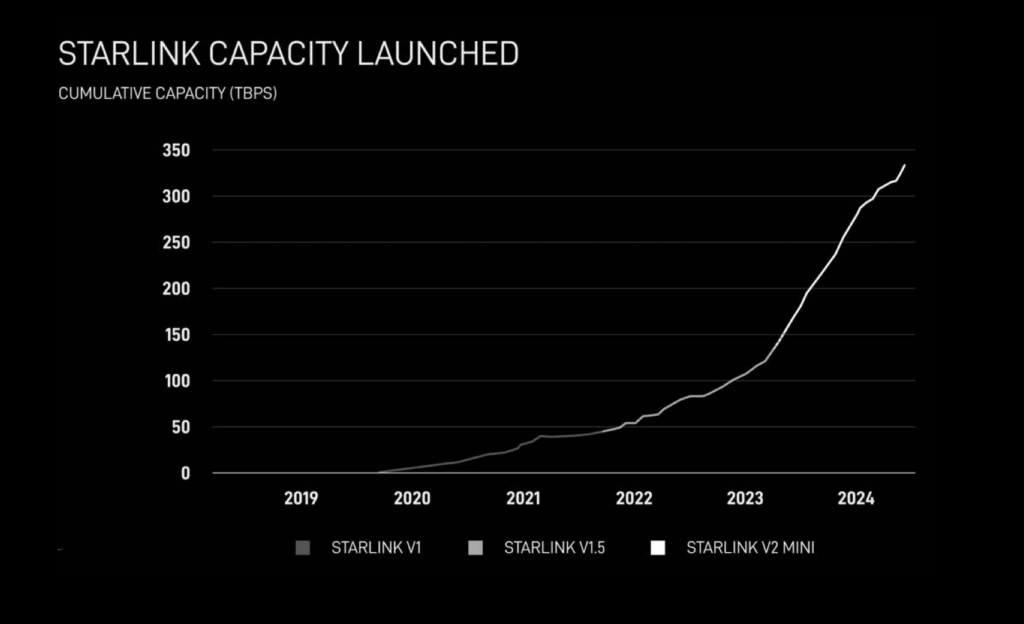
A failure like this could lead to an extensive delay with more traditional companies.
But SpaceX has a company culture where "failure is an option," and it has already demonstrated an amazing ability to learn from and move past even the biggest setbacks.
Elon Musk is already hoping for another launch as soon as next month.
If Starship flight test 8 goes well, it is conceivable that flight test 9 or 10 might be orbital - and test deploy some actual Starlink V3 satellites.
And unless things go horribly wrong in the test campaign - it still seems likely that by the end of 2025, the Starlink V3 constellation should be on its way to commercial deployment.
Things are pretty exciting in the mobile internet space race—excitement is guaranteed! Stay tuned for our annual satellite industry update, coming soon, where we'll recap all that is happening in this exciting time!
UPDATE: Starship Eight RUD’s Again!?!
SpaceX suffered a major setback on March 6th, 2025 when the eighth Starship test flight failed even earlier in its mission than the seventh.
SpaceX published a brief update on the mishap:
"Starship continued its ascent to its planned trajectory. Prior to the end of the ascent burn, an energetic event in the aft portion of Starship resulted in the loss of several Raptor engines. This in turn led to a loss of attitude control and ultimately a loss of communications with Starship. Final contact with Starship came approximately 9 minutes and 30 seconds after liftoff."
This mission was supposed to be a do-over of the prior failed launch - including testing the Starlink V3 deployment system.
Though the booster performed spectacularly and was once again caught and recovered, the Starship itself blew up.
None of the planned testing was able to happen, yet again.
Two nearly identical failures in a row is highly unusual for SpaceX, and this might ultimately prove to be a big setback for SpaceX (and Starlink) if it is determined that there is a need to redesign some key components.
Learn More:
Starlink's Referral FAQ.
Use our referral link when purchasing equipment from Starlink.com and activating a consumer Residential or Roam Unlimited data plan - and get a FREE month of service!
And so will someone on our team, which helps us keep our multiple lines of service active for continued testing.
It's a win-win - you save money and help support MIRC!
Further Reading
- Starlink Satellite Internet For Mobile RV And Boat Use - Our featured guide focused on taking advantage of SpaceX's Starlink on the go.
- Mobile Satellite Internet Options -
 Our featured guide on all the current and future satellite internet options of interest to RVers and cruisers.
Our featured guide on all the current and future satellite internet options of interest to RVers and cruisers. - All our our Satellite Internet Resources - Our collection of guides, gear center entries and news coverage on satellite internet.
- Industry Update: Mobile Satellite Internet for RVers & Boaters – Early 2024 Update: Starlink, Kuiper, Direct To Cellular, and Beyond! - Our deep dive into the state of the satellite internet world.
And here is all of our recent satellite internet coverage:
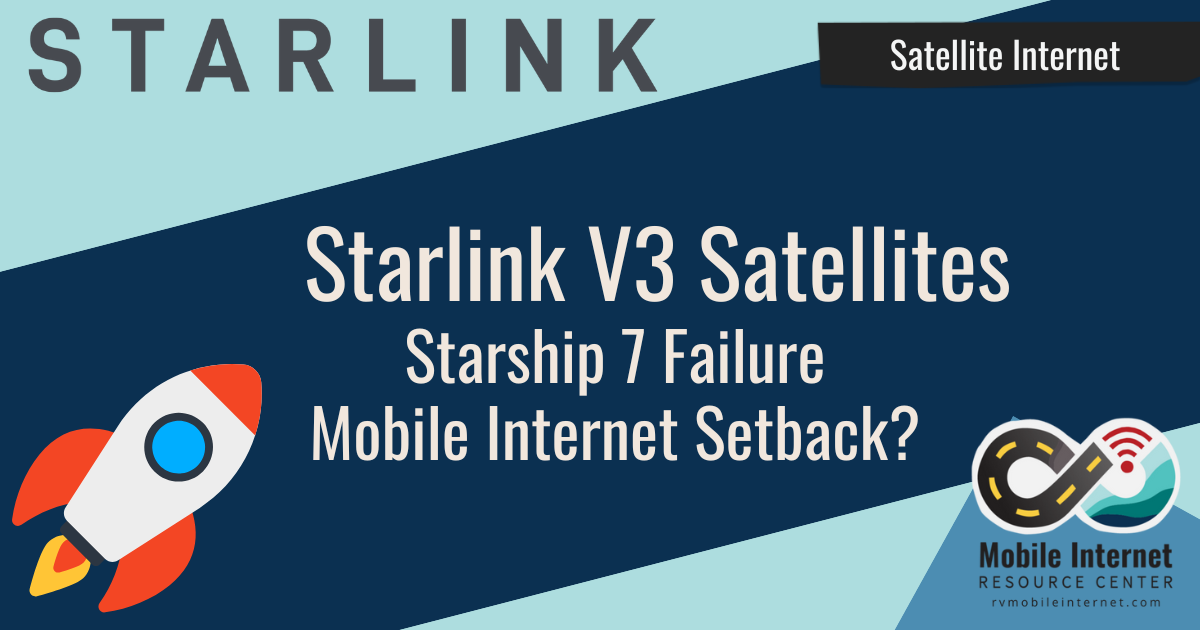








 Mobile Internet Resource Center (dba Two Steps Beyond LLC) is founded by Chris & Cherie of
Mobile Internet Resource Center (dba Two Steps Beyond LLC) is founded by Chris & Cherie of